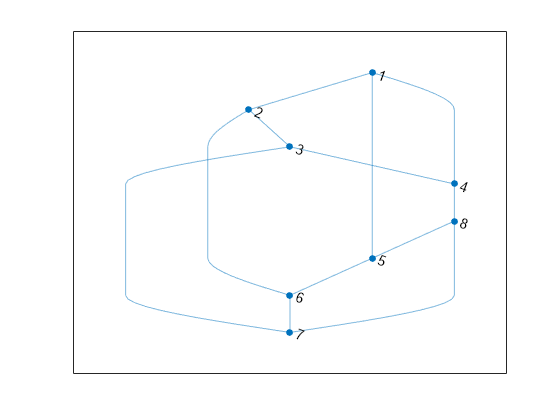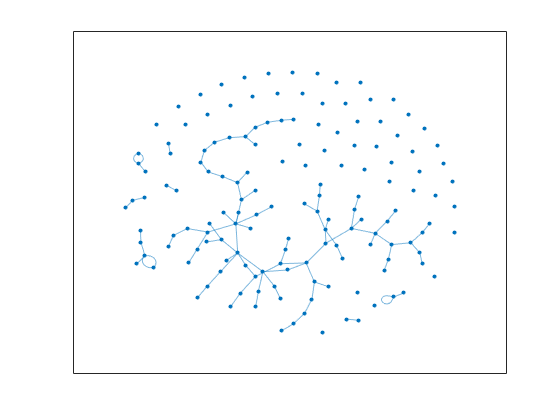layout
更改图论图布局
说明
layout( 使用一个或多个名称-值对组参量指定的其他选项。例如,H,method,Name,Value)layout(H,'force','Iterations',N) 指定在计算力导向图布局中要使用的迭代次数,layout(H,'layered','Sources',S) 使用分层布局,其中第一层包含源节点 S。
示例
输入参数
名称-值参数
提示
绘制图形时,可使用
Layout名称-值对组更改图形的布局。例如,plot(G,'Layout','circle')使用圆形布局绘制图G。使用
'force'或'force3'布局方法时,最佳做法是在算法中使用多次迭代,而不是使用XStart、YStart和ZStart在先前输出的基础上重新启动算法。对算法执行 100 次迭代的结果不同于先执行 50 次迭代,然后从结束位置重新启动算法继续执行 50 次迭代。
参考
[1] Fruchterman, T., and E. Reingold,. “Graph Drawing by Force-directed Placement.” Software — Practice & Experience. Vol. 21 (11), 1991, pp. 1129–1164.
[2] Gansner, E., E. Koutsofios, S. North, and K.-P Vo. “A Technique for Drawing Directed Graphs.” IEEE Transactions on Software Engineering. Vol.19, 1993, pp. 214–230.
[3] Barth, W., M. Juenger, and P. Mutzel. “Simple and Efficient Bilayer Cross Counting.” Journal of Graph Algorithms and Applications. Vol.8 (2), 2004, pp. 179–194.
[4] Brandes, U., and B. Koepf. “Fast and Simple Horizontal Coordinate Assignment.” LNCS. Vol. 2265, 2002, pp. 31–44.
[5] Y. Koren. “Drawing Graphs by Eigenvectors: Theory and Practice.” Computers and Mathematics with Applications. Vol. 49, 2005, pp. 1867–1888.
版本历史记录
在 R2015b 中推出









